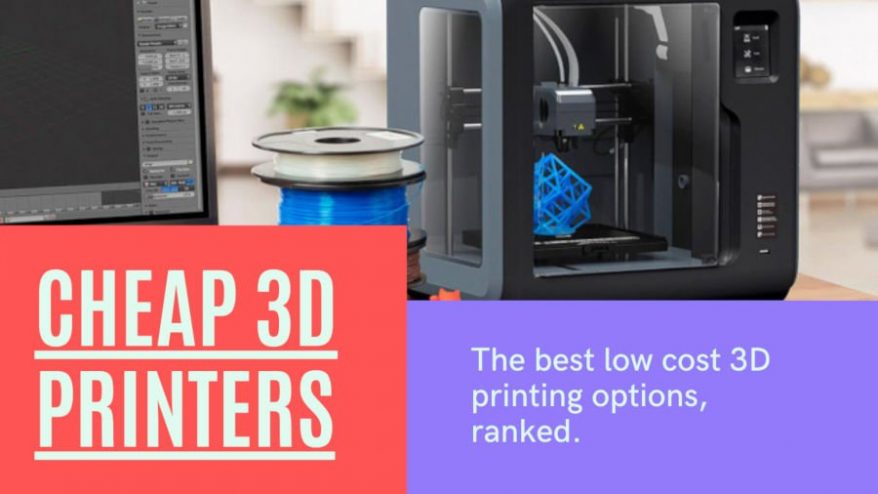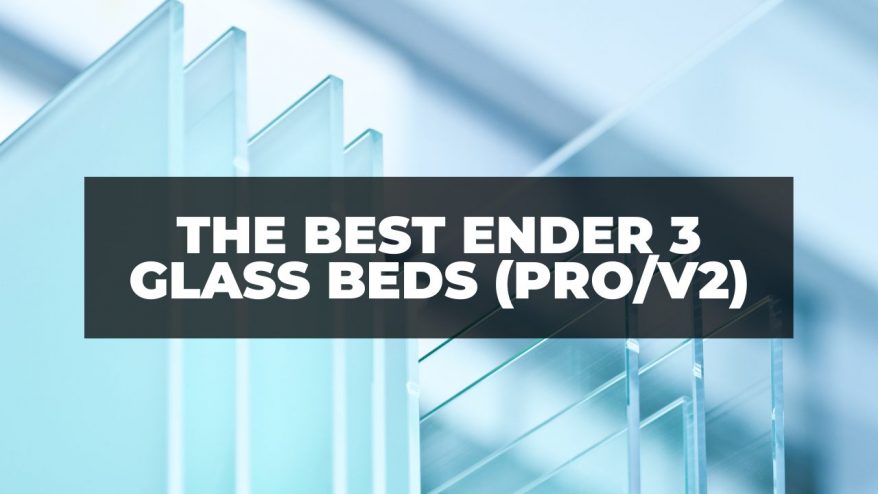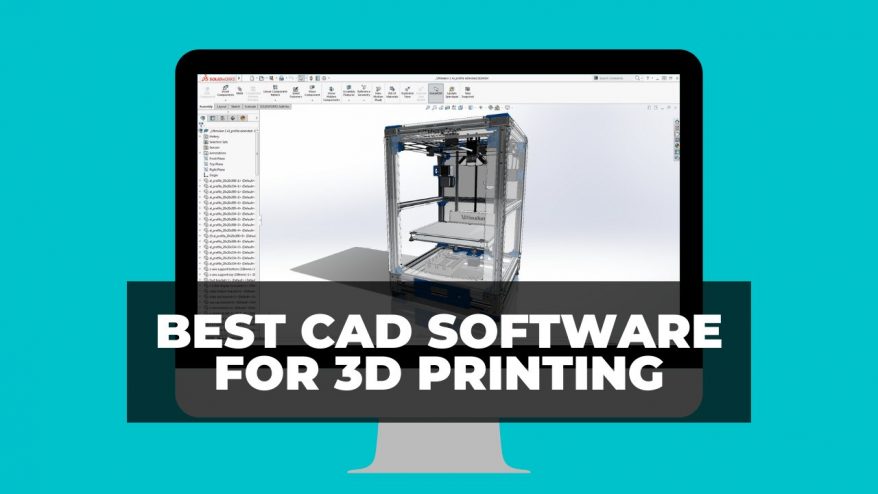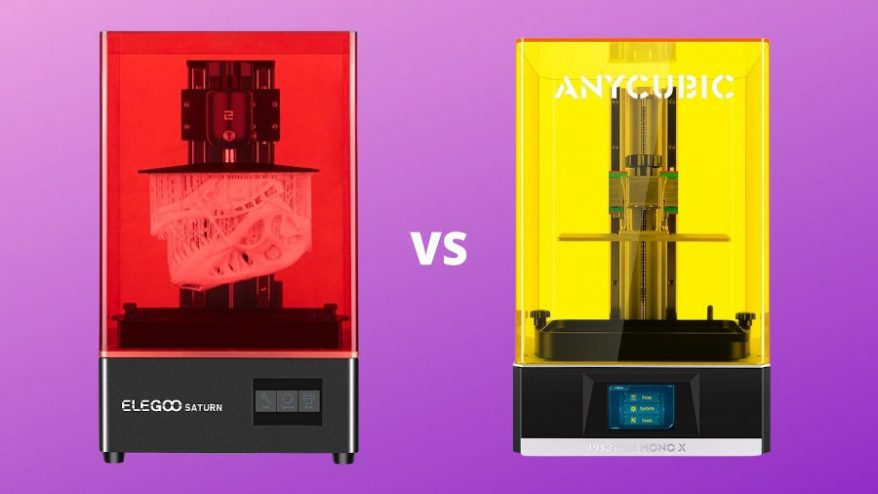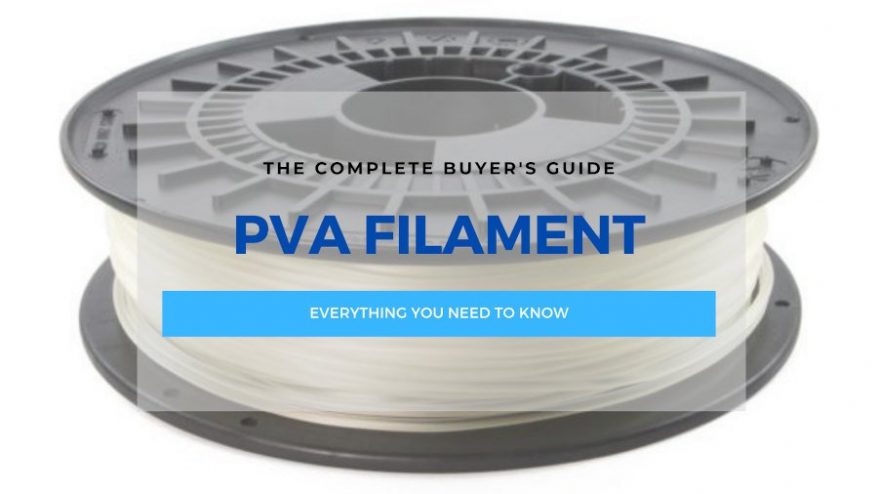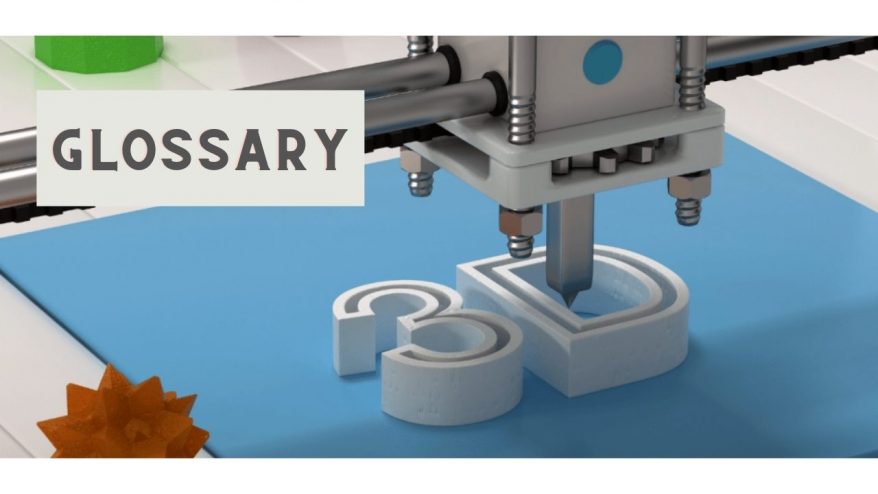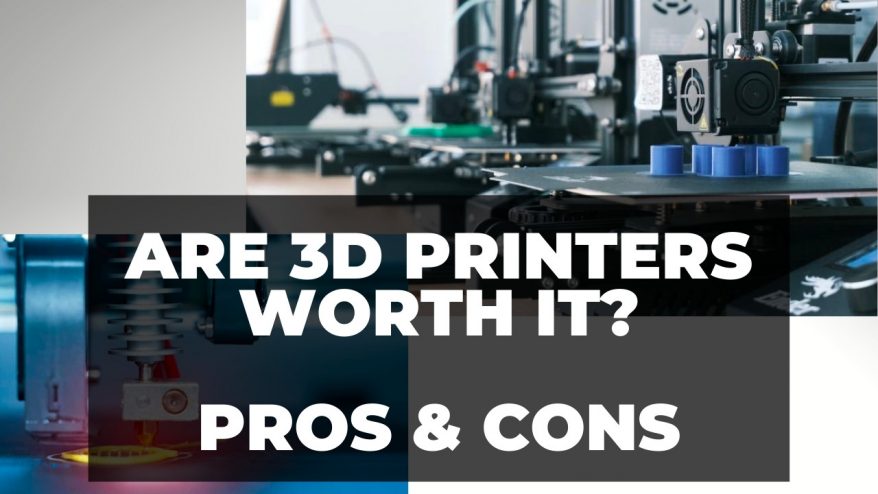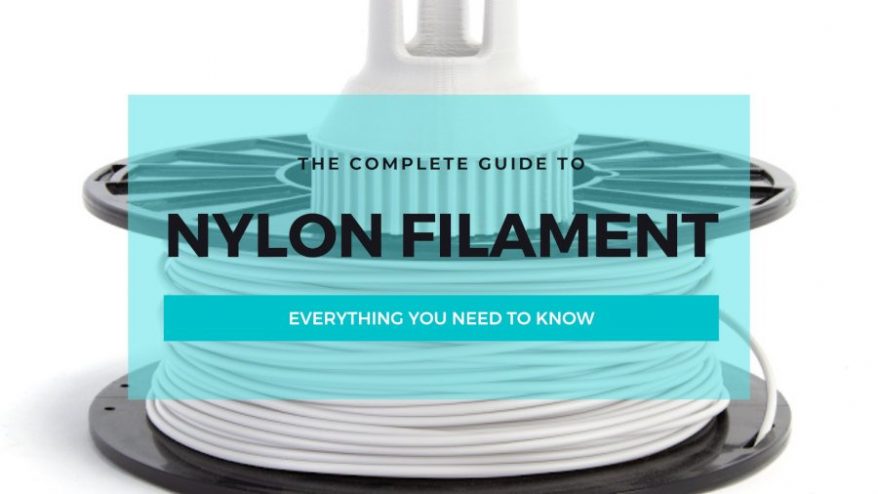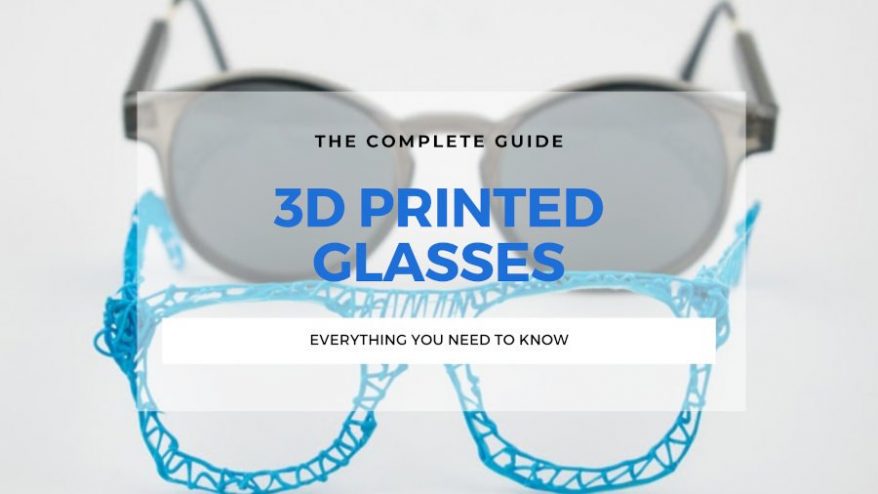
How 3D Printed Glasses Will Change Our Sight Forever


At 3DSourced we’ve covered everything 3D printing and 3D since 2017. Our team has interviewed the most innovative 3D printing experts, tested and reviewed more than 20 of the most popular 3D printers and 3D scanners to give our honest recommendations, and written more than 500 3D printing guides over the last 5 years.
You’re sitting in a dark room, squinting at the random letters on the wall that will decide your fate. Inevitably, this will mean scrapping the pair of specs that you’ve just gotten used to and swapping them for some cumbersome, ill-fitting new frames that may take years to re-adjust to. If this is a familiar situation for you, you’ll appreciate 3D printed glasses.
Roughly 75% of adults worldwide have had to endure this gruelling process. However, 3D printed glasses offer a solution, making these dreaded trips far easier – and even exciting – having already started to transform the eyewear industry over the last few years.
The advantages of 3D printed glasses leave traditional manufacturing solutions in the dark by streamlining the process and improving designs, reducing costs, and potentially even printing your new set of glasses in front of you in just minutes.
What are 3D printed glasses?
3D printed glasses are typically manufactured using SLS 3D printers using Nylon powders. SLS uses a powerful laser to solidify certain areas of polymer powders to create precise and intricate structures, perfectly suited for custom 3D printed eyewear.
- We also have a buyer’s guide to SLS 3D printers.
Rather than standard frames which may not fit your head perfectly, 3D printed glasses can be printed to fit your exact dimensions — so they’ll never fall off your nose again. Simple scans of your face using a 3D scanner can take your exact facial measurements.
- We also have a buyer’s guide for 3D scanners.
Perhaps even more importantly, 3D printing custom one-off glasses means anyone can design their ideal pair, with different thicknesses, styles and shapes able to be made seamlessly.
Not only can these printers produce eyewear frames quickly and cheaply, but they can print several custom frames simultaneously. For example, if three people came to purchase glasses at the same time and wanted their own custom pair, one SLS 3D printer could print these three pairs of eyewear simultaneously.
If you are interested in purchasing a 3D printer for eyewear production, we may be able to help:
*One of our trusted partners will be in touch following a quote request.
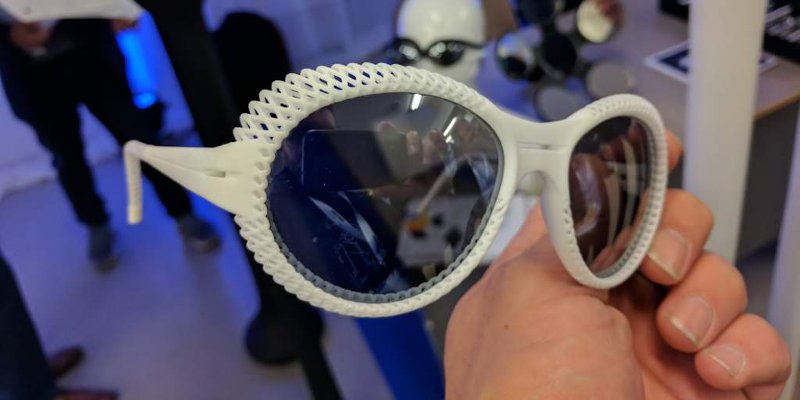
Advantages of 3D printed glasses
Aesthetics & Increased Customizability
3D printing’s ability to create intricate and delicate parts that traditional production methods cannot emulate has already revolutionized the design and prototyping industries.
Glasses are to so many an expression of their personalities – their trademark – that for these individuals, 3D printing’s limitless customizability offers a whole new way to portray themselves to the world.
3D printed glasses can also be made as one whole part, removing the unsightly screws and soldering that plagued previous designs. 3D printing frees you from standardized eyewear designs, so if you’re more eccentric and want your glasses to reflect that, you can customize to your heart’s content.
One downside aesthetically is that the Nylon material comprising most 3D printed glasses designs has a notoriously porous finish, which not all consumers will enjoy. However, a German manufacturer profiled later in this article have a solution to this.
Performance
Nylon, the most commonly used material for 3D printed glasses, is known for being lightweight yet durable due to its flexibility. This light weight is vital for comfortable wearing, and durability indispensable for not breaking when you drop them — or when your two-year-old unknowingly makes your glasses her new favorite toy.
However, Nylon’s porosity means that hard impacts can cause it to crack or shatter. Due to the versatility of 3D printed frames, several manufacturers are already exploring eyewear options including interchangeable lenses — 21st Century convenience at its finest.
Some people have different glasses for different uses. Lugging around several pairs of glasses for different tasks can be tiresome. 3D printed glasses frames with interchangeable lenses provide a compact and cheaper solution to the problem that many of us face.
Custom 3D printed glasses can also be designed so the frames specifically fit your face shape, right down to the nearest millimeter, eliminating the chance of them sliding down, being too tight, generally badly fitting and causing annoyance throughout the day.
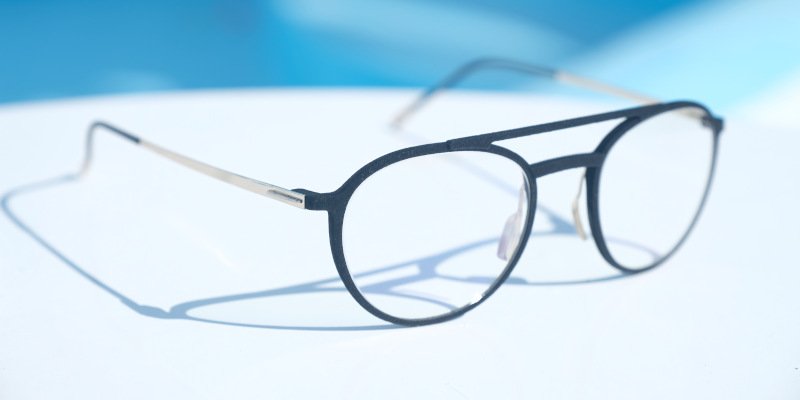
Ethical & Environmentally Friendly
Waste is one of the optical industry’s biggest issues, both environmentally and economically. Every year, 45% of frames around the world are unsold and discarded.
3D printed eyewear alternatives could completely eradicate wastage in this sector, as each pair of frames is completely custom made to an individual’s design, size and preferences, and additive manufacturing only uses the exact material required. Any unused Nylon powder can also be reused, and doesn’t go to waste.
Even though nylon is a derivative from oil and is not biodegradable, slashing industry waste by almost half is a substantial step toward a more environmentally conscious glasses-wearing society. In addition, Danish company Monoqool have developed a 100% biodegradable yet durable material made from castor beans, which can be farmed and grown in containers in easy to manage conditions.

Helping in the developing world
The cost and customization advantages make 3D printing glasses ideal for providing cheap eyewear in the developing world. The World Health Organisation estimates that “roughly 314 million people are visually impaired, with nearly 90% of blind and visually impaired people living in countries with lower to minimum scale incomes.”
Therefore, 3D printed glasses glow as a beacon of hope for those who are affected by visual implications intensified by poverty.
By using a RepRap 3D printer or other cheap 3D printer costing just $200, glasses can be printed within one hour for as little as one dollar each, and are completely customized to the wearer. As they fit better and are made from tougher materials, 3D printed glasses frames likely last longer than traditional glasses.
Though 3D printed frames do not solve the extensive waiting list to see an optician in developing countries, time is critical when it comes to vision. By reducing the several-week-long wait times to just a day or two, 3D printing glasses offers huge benefits in both the developed and developing world.
Major 3D Printed Glasses Projects
A number of companies are proving that 3D printed glasses are a viable and desirable alternative to traditional manufacturing methods.
These companies offer a wide range of 3D printed glasses, across styles, designs, ethics and more:
Mykita
Berlin-based chic fashion brand Mykita have taken it upon themselves to not only create ever-stylish and hipster-esque frames, but to also solve one of nylon’s few drawbacks; its un-sleek porous finish. Mykita describes themselves as having a culture of curiosity and play; this is evident in their bold yet distinguished designs, and it’s clear that being the epitome of style is one of their core values, so naturally a porous finish wouldn’t harmoniously marry with their effortlessly chic aesthetic.
Mykit’s MYLON collection instead allows for a silky-smooth texture, rather than Nylon’s rough finish — despite still using Selective Laser Sintering. Mykita are so determined to keep their perfected formula a secret, they decided against patenting the method, as they’d have to disclose the materials in the mixture. And so far, no one else has come close to creating the same glossy finish.
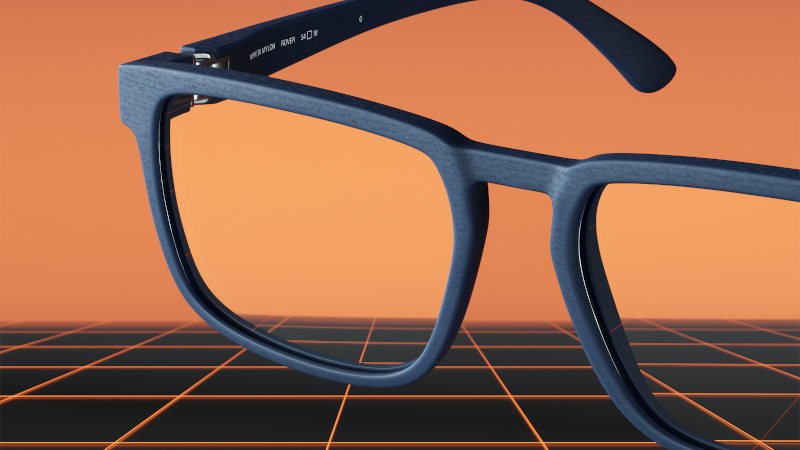
Monoqool
Previously mentioned Danish company, Monoqool, who are arguably one of the most popular options for 3D Printed Eyewear in the UK, describe their collection as a “dramatic re-thinking of how glasses should be” and of course, the clue is in the name – their designs are incredibly sleek and ‘qool’. They boast classic, lightweight, and durable glasses that weigh just six grams!
But what really distinguishes Monoqool is their environmentally conscious alternative to nylon. Not only does Monoqool highlight that due to additive manufacturing reduces waste by 85% when compared with traditional production methods, but they are able to recycle 98% of their raw castor bean alternative, with the other 2% being biodegradable anyway!
Frustratingly, due to the innovative nature of this product Monoqool have decided to limit the release of these frames to only one hundred stores worldwide, meaning the chances of getting your hands on these biodegradable 3D printed sunglasses could be quite the challenge.

Octobre71
Calling all the fashionistas, this one is for you. Based in France, Octobre71 boasts designs and colours that are as cutting edge and exciting as the technology used to create them.
And what’s better, the frames cost between €89 and €129 – very reasonable compared to the price you might pay for some designer frames that aren’t created using such cutting-edge technology. Octobre71 are already proving to be a huge hit in the high-fashion world, featuring their 3D printed sunglasses in ELLE magazine within the first five years of using 3D printed designs.
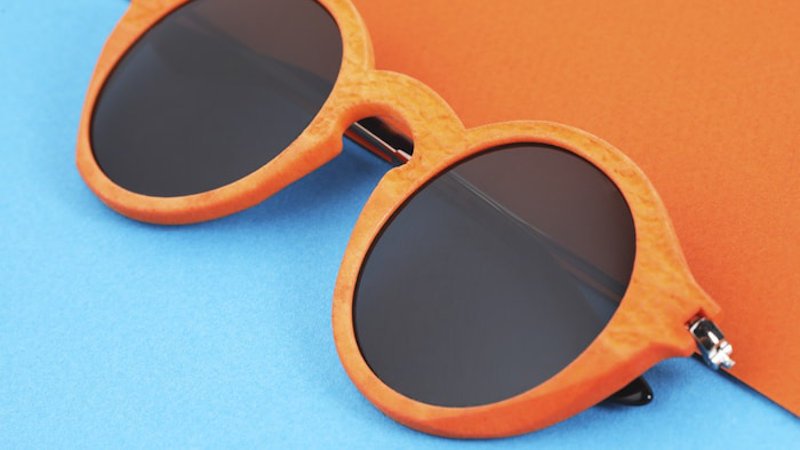
FitzFrames
Those of you with kids who need glasses know that the already tedious visit to the optician is only made worse by the fidgeting, the crying and the wails, only to be followed by their brand new specs being broken or scratched within a fortnight. Kids. But American company FitzFrames feel that 3D printed glasses could help pacify this tiresome experience by greatly reducing the time spent at the opticians and ensuring the frames fit perfectly, reducing the risk of damage.
They do this via their app, which creates a point cloud by scanning your face and recording your dimensions to 3D print perfectly fitting glasses for you. You can get your perfect pair of glasses without having to even leave your house, as FitzFrames 3D print your glasses locally and send them to you.
For their innovation, they too have attracted the attention of popular publications, such as the LA Times and People Magazine.
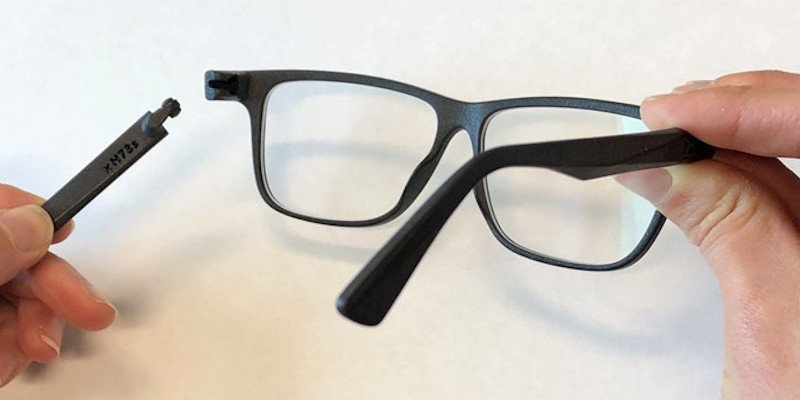
Conclusion: The Future of 3D Printed Glasses
All in all, 3D printed glasses solve many of the issues faced in our first-world pursuit for the perfect balance of convenience, cost, couture and climate consciousness, while also providing an unrivaled solution to the shortage of visual aid in developing countries.
However, despite the environmental advantages, 3D printed glasses have not yet become a mainstay in the eyewear industry, with most frames currently bought in bulk from manufacturers in countries such as Denmark and Germany at costs that 3D printed eyewear cannot currently match.
In spite of this, 3D printed glasses technology has advanced so rapidly in the last few years, with the expectation of 3D printed lenses seemingly obtainable within the next few years. Based on this, it’s likely that SLS printers will become a common feature within local opticians, and perhaps we will all be sporting custom 3D printed glasses in the very near future.







